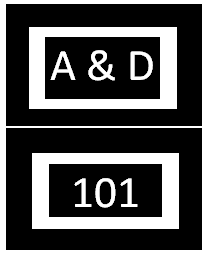abstract – nonrepresentational; forms, colors, and marks that don’t reference an object
Baroque – European art from 1600 to 1750, typically dramatic and ornate
buyer’s premium – in an auction, a fee (usually a percentage) that goes to the auction house, paid by the buyer in addition to the hammer price
cantilever – a long projecting structural element, like a beam or a slab, supported at only one end
chiaroscuro – the use of strong contrasts between light and dark, especially to give objects volume
collage – an artwork made by attaching multiple materials (paper, newspaper, cloth, photographs, drawing, etc.) to a flat surface.
contemporary art – art produced today instead of in historical periods, beginning roughly after 1960
deaccession – remove an item from the listed holdings of a museum, usually to sell it
documenta – a 100-day contemporary art exhibition held every five years in Kassel, Germany, since 1955. It features about 150 artists.
expressionism – a twentieth-century art movement that allows the distortion of realistic descriptions to express a personal vision and emotion
freeport – a warehouse in which artworks can be stored free from scrutiny of customs agents and import taxes & duties
fresco – a painting in which water-based pigments are applied to wet plaster on a wall or ceiling. The colors penetrate the plaster, becoming permanently fixed when it dries.
Gothic – in art and architecture, originally considered barbaric compared to classical standards, produced in western Europe in the 12th to 14th centuries.
impasto – a painting technique in which paint is applied in a thick layer, sometimes with a knife instead of a brush
Impressionism – 19th-century art movement, emphasizing light and a moment
kinetic (adj.) – an artwork that depends on movement for its effect
luminosity – refers to the illusion of light or brightness within a painting
medieval period – also known as the Middle Ages, the period between the 5th and 15th centuries
monumental – art historians love this word. They cannot bring themselves to say “very big.”
palette – a thin board with a thumb hole at one end, used by an artist to mix paint colors
perspective – a way of depicting three-dimensional objects on a two-dimensional plane to give the illusion of space and volume from a point of view.
photorealism – a movement of the 1960s and 1970s in which the artist realistically reproduces an image from a photograph in another medium
plinth – a base or box on which a sculpture or other object is displayed
pointillism – a scientific system of painting in which color is separated into its component parts, applied to the canvas in little dots
provenance – the history of the ownership of an artwork
Renaissance – French word for rebirth. Describes the revival of classical styles in the arts, architecture, and literature in 14th- to 16th-century western Europe. It follows the medieval period.
sfumato – Italian for “smoky” a haziness that softens outlines in paintings
still life – a picture depicting an arrangement of objects
synesthesia – a neurological condition in which information stimulates a sense, triggering another sense. For example, a person sees a color when hearing a sound.
tempera – a fast-drying paint consisting of pigment and water mixed with a binder like egg yolk or milk protein
tondo – a circular painting or relief sculpture
